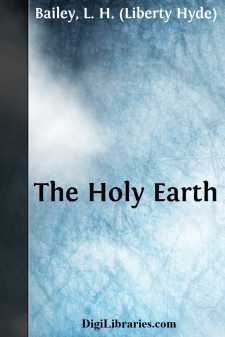Categories
- Antiques & Collectibles 13
- Architecture 36
- Art 48
- Bibles 22
- Biography & Autobiography 813
- Body, Mind & Spirit 142
- Business & Economics 28
- Children's Books 14
- Children's Fiction 11
- Computers 4
- Cooking 94
- Crafts & Hobbies 4
- Drama 346
- Education 46
- Family & Relationships 57
- Fiction 11829
- Games 19
- Gardening 17
- Health & Fitness 34
- History 1377
- House & Home 1
- Humor 147
- Juvenile Fiction 1873
- Juvenile Nonfiction 202
- Language Arts & Disciplines 88
- Law 16
- Literary Collections 686
- Literary Criticism 179
- Mathematics 13
- Medical 41
- Music 40
- Nature 179
- Non-Classifiable 1768
- Performing Arts 7
- Periodicals 1453
- Philosophy 64
- Photography 2
- Poetry 896
- Political Science 203
- Psychology 42
- Reference 154
- Religion 513
- Science 126
- Self-Help 84
- Social Science 81
- Sports & Recreation 34
- Study Aids 3
- Technology & Engineering 59
- Transportation 23
- Travel 463
- True Crime 29
The Practical Garden-Book Containing the Simplest Directions for the Growing of the Commonest Things about the House and Garden
Description:
Excerpt
Like the love of music, books and pictures, the love of gardens comes with culture and leisure and with the ripening of the home life. The love of gardens, as of every other beautiful and refining thing, must increase to the end of time. More and more must the sympathies enlarge. There must be more points of contact with the world. Life ever becomes richer. Gardening is more than the growing of plants: it is the expression of desire.
As there must be many gardeners, so there must be many books. There must be books for different persons and different ideals. The garden made by oneâs own hands is always the best garden, because it is a part of oneself. A garden made by another may interest, but it is another personâs individuality. A poor garden of oneâs own is better than a good garden in which one may not dig. Many a poor soul has more help in a plant in the window than another has in a plantation made by a gardener.
I would emphasize the home garden, made by the members of the family. I would preach the beauty of the common plants and the familiar places. These things are never old. Many times I have noted how intently an audience of plant-lovers will listen to the most commonplace details respecting the cultivation of plants with which they have been always familiar. There was nothing new in what they heard; but they liked to have the old story told over again, and every detail called up a memory.
The same questions are asked every year, and they always will be asked,âthe questions about the simplest garden operations. Upon this desire for commonplace advice the horticultural journals live. A journal which publishes only things that are new would find little support. Some of these common questions I have tried to answer in this little book. I wish them answered in the simple and direct phrase of the gardener. Therefore I asked my friend C. E. Hunn, gardener to the Horticultural Department of Cornell University, who lives with plants, to write advice for one who would make a garden; and this he did in a summer vacation. These notes, edited and amplified, now make this book.
L. H. BAILEY.
Horticultural Department,
Cornell University.
Ithaca, N. Y., February 22, 1900.
THE
PRACTICAL GARDEN-BOOK
Abobra viridiflora. A handsome tender climber with tuberous roots, that may be taken up in the fall and stored in a cellar. The foliage is dark and glossy, the flowers small and inconspicuous; but the small scarlet fruits are very effective in contrast to the leaves, making it a desirable screen plant. It is sold by seedsmen. Seeds sown as soon as warm weather comes will give plants which bloom in the open (in a warm soil and exposure), and which reach a height of 5-8 ft. It is sometimes grown as a glasshouse plant. It is cucurbitaceous (allied to melons and gourds).
Abronia. Californian trailing perennials, but treated as hardy annuals. They thrive in any warm, open garden soil, and are very satisfactory for the margins of beds or borders. The little flowers are borne in clusters. A. latifolia or arenaria (yellow) and A. umbellata or grandiflora (pink) are the leading kinds. Usually sown where they are to bloom. Peel the husk off the seed before sowing.
Abutilon striatum
Abutilons, or Flowering Maples as they are called by many, make fine house or bedding plants. Common kinds may be grown from seed or from cuttings of young wood. If the former, the seed should be sown in February or March in a temperature of not less than 60°....





